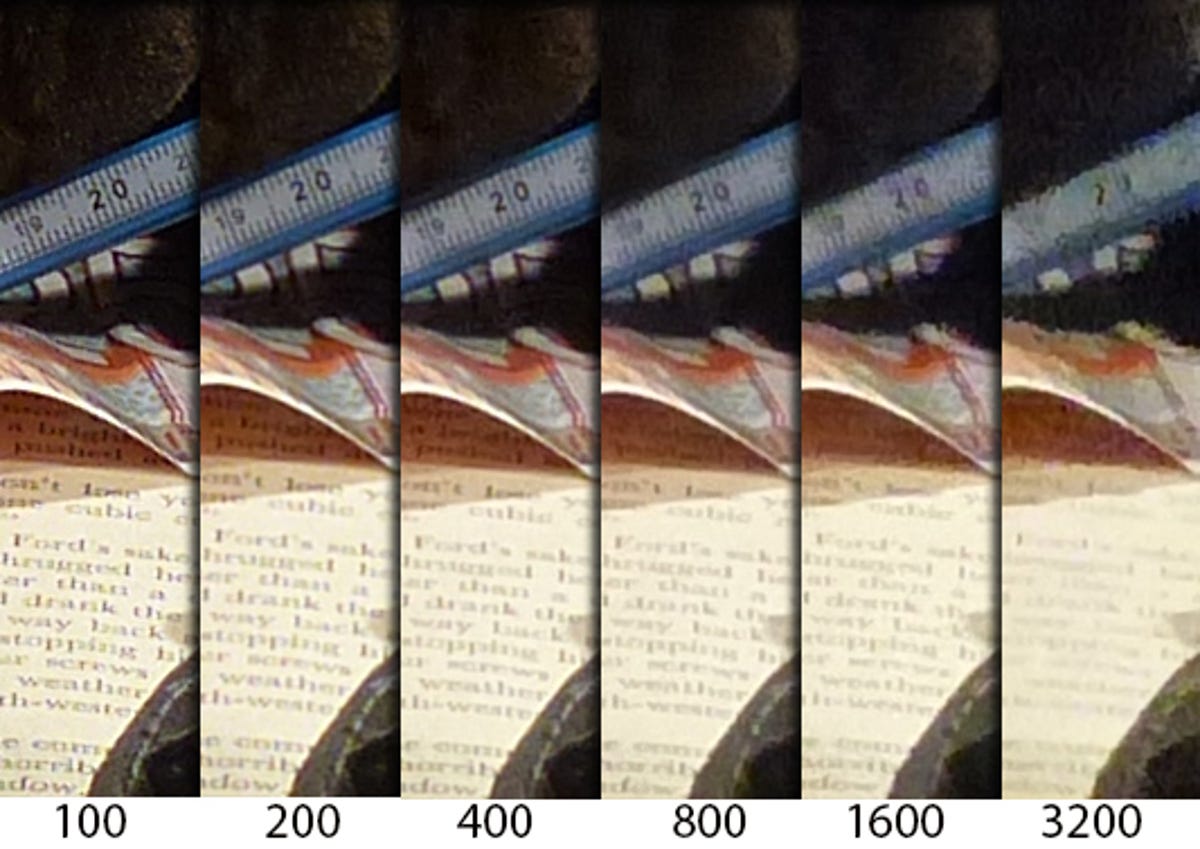
ISO comparison
These are 100 percent crops from our test scene to give you an idea of what you'll get at full size onscreen using the Panasonic Lumix DMC-FZ200. The FZ200's new sensor and improved JPEG image processing do result in better photos (and video, for that matter) than we got from its predecessor, the FZ150. Pixel peepers will see noise and artifacts, even at ISO 100, but the photos are still more usable at larger sizes up to ISO 400. With the f2.8 aperture available through the zoom range, though, you don't need to be shooting in full sun or using its higher ISO settings to get a good shot. In fact, during shooting in mixed daylight conditions, the camera rarely went above ISO 400. When you're shooting with less light with the lens fully extended and you're trying to freeze action, however, you'll probably still need its higher ISOs.
Photos do get noticeably softer at ISO 800, but above that things get smeary. If you don't like the results you're getting from Panasonic's JPEG processing, however, you can always shoot in Panasonic's RW2 raw format and process the photos yourself. After some quick adjustments using Adobe Camera Raw in Adobe Lightroom (nothing difficult, just moving some sliders), I was able to improve color, detail, and amount of noise. The camera's performance doesn't slow down when shooting in raw or raw plus JPEG, either.
JPEG vs. raw at ISO 100
JPEG vs. raw at ISO 1600
ASM modes
Zoom range
Intelligent Zoom
Lens distortion
Panorama Shot
Creative Control
Creative Retouch
Photos at 600mm (f6.3, 1/1250th, ISO 100)
This slide and all that follow are all photos taken at 600mm. Each has a link so you can view the full-resolution file. These are large files, though, so it may take several seconds for each to load.
View at full size.
